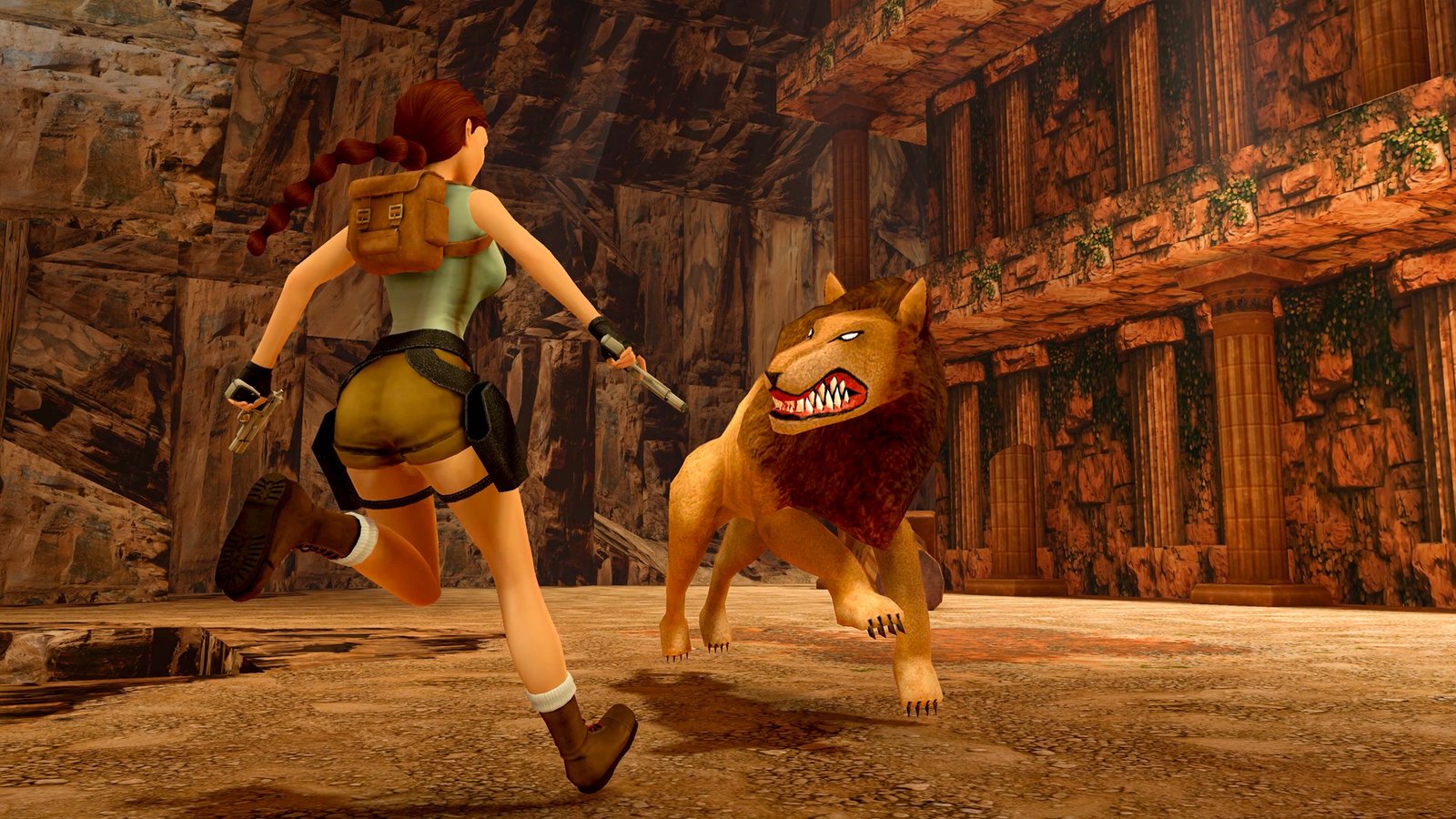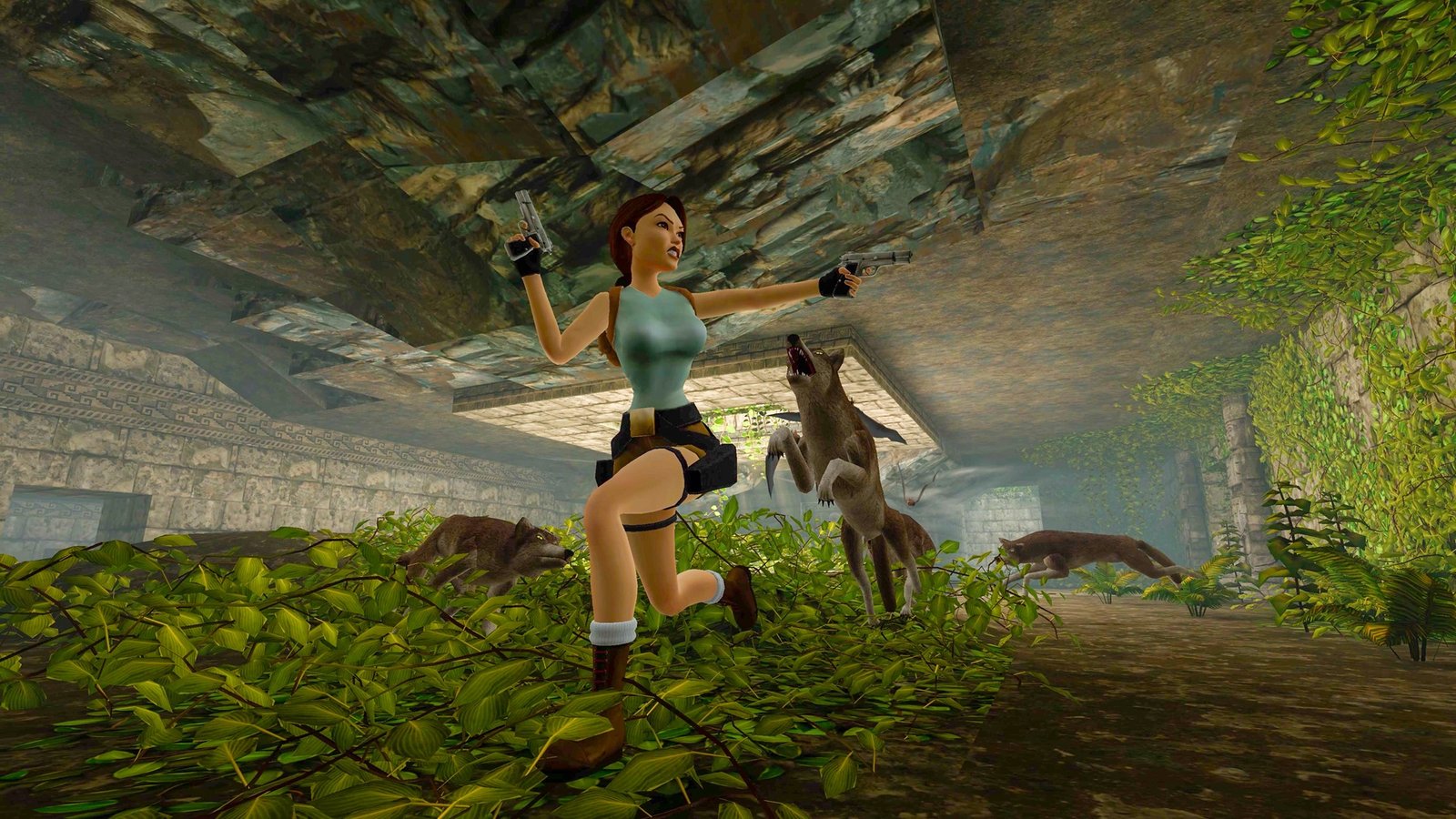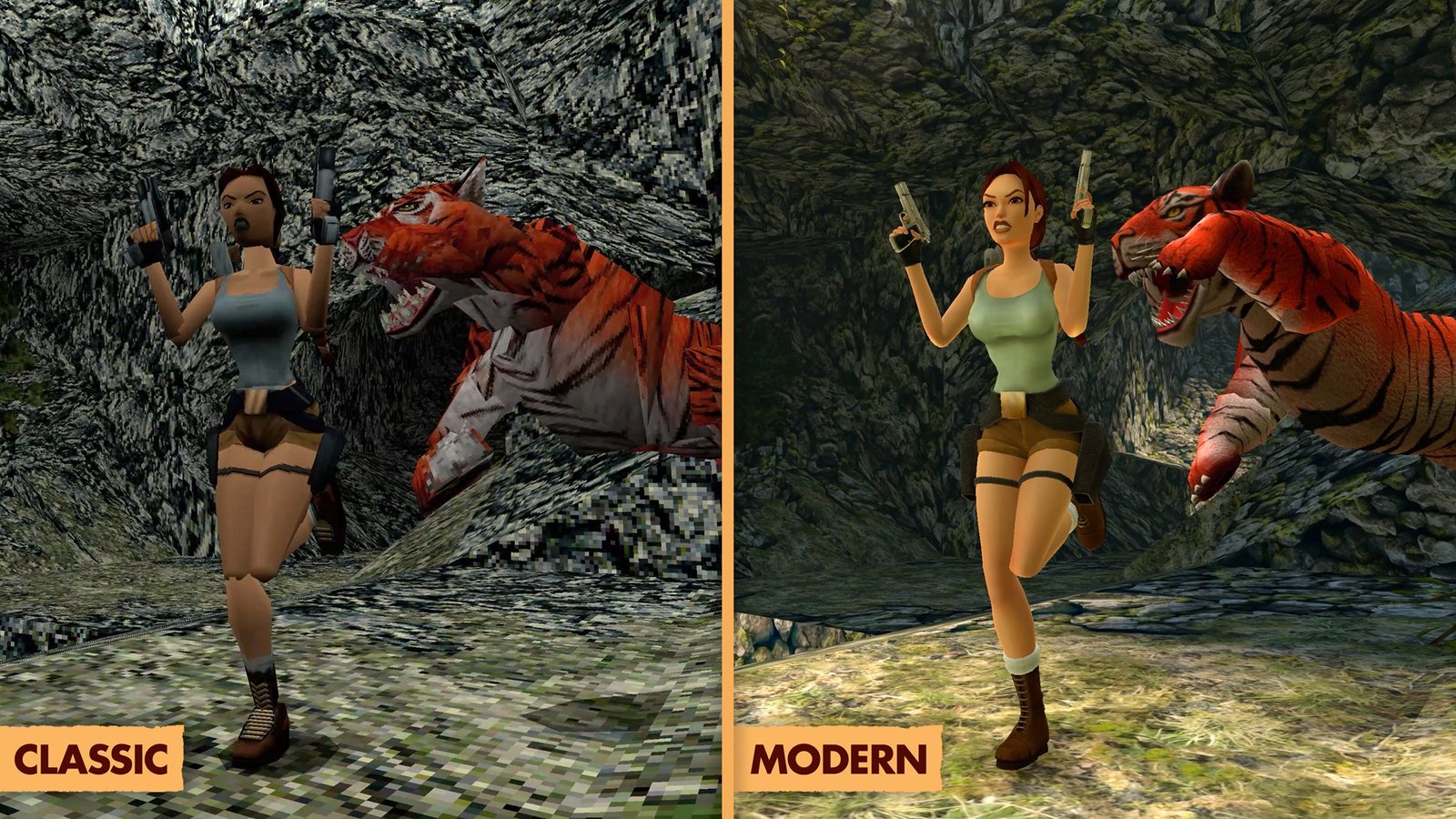
Developed and published by Aspyr Media along with Crystal Dynamics, Tomb Raider I – III Remastered Starring Lara Croft is a collection of three Tomb Raider titles that have been brought back to modern life. Originally designed and developed by Core Design, the first three Tomb Raider games featured the initial adventures of Lara Croft that kickstarted a franchise that is still alive and kicking to this day. You might have only played the latest trilogy of Lara Croft and while those might not be her best adventures, to really understand where she comes from, you can now try out the first three games on modern consoles and PCs. This is our review of Tomb Raider I – III Remastered on the PS5 in which we try to land some jumps while fighting with the camera and kill a T-Rex.
Tomb Raider I – III Remastered features the first three games in a franchise that has set a bar for story-based treasure hunting. I was initially introduced to the franchise by my sister who purchased Tomb Raider III when I was in my fifth grade but she was unable to complete the game. It was ultimately me who managed to get us to that final credits screen at the end of the adventure and it was one of the early few games that I played and completed all the way to the end. Jumping back into the game now after more than 20 years feels like a completely different story. The content is pretty much the same for all three games but you do get all of the bonus DLC campaigns for all three games along with the same rotating icon menu that we all loved back in the day.
I always liked the early Tomb Raider titles because playing them and completing them felt like actual treasure and relic hunting because you had nothing to guide you in the game. While the modern Tomb Raider games certainly make climbing, running, and moving around a lot easier with different pointers like prominent ledges, dangling bricks and such but here, you have to trust your mind and find everything on your own. Most of the areas hide special items like health packs, ammo packs, and more but you have to figure out their way and pick them. The game does not offer hand-holding of any sort. The levels in the first three games are not that big anyway but if you get stuck somewhere, you are on your own. Gameplay requires a lot of precision as platforming sections will see you landing difficult jumps and then moving to the next section by climbing. Sometimes you need to jump and hold another button to grab to ledges which makes climbing a real deal.
There are also no autosaves which means manual saves all the way to the end or you will keep restarting a level. You will die a lot in the game because of its controls and lack of precision so you will either need to save quite a lot or if you prefer, you will need to restart the level all the way from the beginning. However, with all of this, the gameplay is pretty straightforward as well. There is no crafting or changing of outfits so you have to survive the entire game with what the game gives you. You have your trusty dual pistols and you will need to find and use health packs. Often you will find other quest items but other than that, combat and general gameplay is pretty straightforward. There are no complex gameplay mechanics here. However, what makes the gameplay complex is its Modern and Tank controls.
The Tank controls are basically the classic controls that have been brought back to modern games and modern games are part of the new ‘remaster’ theme. They are meant to offer a more modern approach to playing the three games but in reality, they are just as frustrating as the tank controls. During my playthrough of all three titles, I figured out that there is no right way of playing these remasters. You will need to continuously switch between the two controller types to progress in the game. I found the Tank controls to be better when it came to tight platforming sections and solving puzzles. On the other hand, modern controls are much better for exploring the world and running around open areas and combat. Both have their ups and downs so you will need to figure out a system that works for you.
I would have loved it if the remasters came with an option to quickly switch the control modes with a press of the button as well like the visuals but sadly you have to navigate the menu to do so. If you are not worried about how many times you save the game, you can also save right before a difficult section and keep trying to figure out which control style is better for that particular section. I managed to clear some of the initial puzzles in Tomb Raider I with modern controls easily but in the later half and in Tomb Raider II and Tomb Raider III, I used tank controls for puzzle sections.
Probably the most prominent difference between the classic titles and the modern ones is the visuals. Every game looks gorgeous in its polygon sort of way because Aspyr has not changed the visuals from the ground up. This means that everything is still very pointy but this time around, it is shiny. Any surface that is flat and does not need any other shape to complete them like walls, floors, and similar surfaces looks beautiful. Starting right from the first Tomb Raider to the third title in the collection, each game looks absolutely beautiful. To make comparisons, pressing the Start button will instantly switch the visuals between the classic mode and modern mode which gives you a chance to check every location quickly. This comparison clearly shows that visuals have drastically improved in the Tomb Raider I – III Remastered.
In the original titles, most of the areas were pitch black and had no details because the hardware lacked enough power to add extra details but this time around, there are no black areas and the view distance is much more. You will see extra areas in each level just because they are not pitch black to hide them anymore. In forests and jungles, the level of foliage has increased drastically and inner areas like temples and ruins are heavily detailed. The walls correctly match their particular era’s designs as you can see different runes, signs, and much more on them. Broken objects now look properly broken and damaged instead of just shaped piled on top of each other. Rivers and other water bodies have clear water and lighting in them and you can see marine life swimming in them clearly as well. Special attention has been given to character models as well which may look a little polygony but they look amazing this time around.
Probably the visuals are my favorite aspect of Tomb Raider I – III Remastered but even they have some sort of limitations. One, the frames become choppy in the modern visuals instantly. I noticed this in all three games. I am not sure if this is a PS5-only issue but the frames drop instantly and feel like the game is in 30 FPS in modern visuals. Switching to classic visuals instantly smoothens up the gameplay with crispy frames. This is very weird because every modern remaster is now aiming for at least 60 FPS with modern visuals and it just falls flat in this. In certain instances, I also noticed that visual effects were better in the older version such as during Tomb Raider I, in the caves level, at one spot, snowdrops were falling through a broken roof section but in the modern visuals, they were not present.
Apart from the visuals, the camera is another front that you will need to battle throughout the three games. It is a lot better when it comes to modern controls and you can move it around freely but it has a bad habit of switching automatically to show you certain angles during platforming sections. It keeps getting stuck when you are in a tight space and moving it around becomes a losing battle. No matter how well you adjust your camera, as soon as you perform a jump or try to move Lara, the camera switches up on its own and makes everything harder since you are unable to see where you are going. For me, this should not be the case with modern controls. If you are going to implement something modern in a game, go all the way or do not go at all. Giving us a free camera with modern controls would have made a lot more sense and it would have made the gameplay much more accessible to modern players.
Jumping back into the old Tomb Raider titles reminded me of the level of frustration and challenges we had in video games when we were little. Maybe we are so accustomed to remasters like FINAL FANTASY VII, Dead Space, or somewhat simpler ones like the Spyro Reignited Trilogy and Crash Bandicoot N. Sane Trilogy that Tomb Raider I – III Remastered does not feel like a proper remaster. While I would have loved it if the developers overhauled the gameplay mechanics and the camera work to suit modern gamers, it would have killed the nostalgia that hides behind these frustration-inducing mechanics. There is a weird type of love-and-hate with Tomb Raider I – III Remastered because you will keep playing the game even if you continue to fail in a particular section due to the dated controls. It is certainly a must-pick-up for any fan of the franchise but will you be able to complete all three games is a completely different question.
Final Verdict:
There is no doubt that the original Tomb Raider trilogy was a masterpiece in its own time and everyone including me loved playing them on our older systems however compared to what sort of remasters we have been getting in the past, Tomb Raider I – III Remastered caters to hardcore fans of the franchise instead of trying to pull in new players. It is very difficult for modern players to get accustomed to these dated mechanics and while the visuals and modern controls do provide some respite to the troubles of the original, they still fall short in a lot of ways which makes this a tough choice to recommend. If you played and loved the original games, you will want to jump back into them to experience the trilogy with modern visuals however if you started gaming with modern Tomb Raider titles, you may want to steer clear of them because you may end up hating them.
Final Score: 7.5/10















